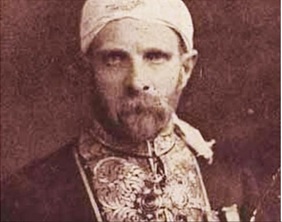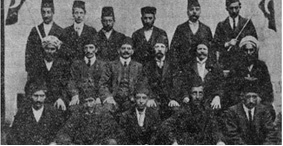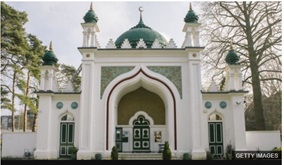At the height of the Empire, a select band of British people renounced Christianity and converted to Islam. These are the stories of three such pioneers, who defied Victorian norms at a time when Christianity was the bedrock of British identity.
Abdullah Quilliam

Solicitor William Henry Quilliam became interested in Islam after seeing Moroccans pray on a ferry during a Mediterranean break in 1887.
“They were not at all troubled by the force of the strong wind or by the swaying of the ship. I was deeply touched by the look on their faces and their expressions, which displayed complete trust and sincerity,” he recalled.
After inquiring about the religion during a stay in Tangiers, 31-year-old Quilliam became a Muslim, describing his new faith as “reasonable and logical and, personally, I felt it did not contradict my beliefs”.
While Islam doesn’t oblige converts to change their names, he adopted the name of Abdullah.
On his return to England in 1887, he became a preacher, and was said to be instrumental in the conversion of about 600 people across the UK.

He also established the country’s first mosque that year in Liverpool – regarded by many at the time as the “second city of the British Empire”.
Queen Victoria, who ruled over more Muslims than the Turkish Ottoman Empire, was among those who ordered his pamphlet “Faith of Islam”, which summarised the religion and was translated into 13 languages.
She is said to have ordered six more copies for her family. But her willingness to learn was not always matched by a wider society which believed Islam to be a violent religion.
In 1894, the Ottoman sultan – with the approval of the Queen – appointed Quilliam as Sheikh al-Islam of the British Isles, a title reflecting his leadership in the Muslim community.
Despite the official recognition, many Liverpudlian converts faced resentment and abuse over their faith, including being assaulted with bricks, offal and horse manure.
Quilliam believed the attackers had been “brainwashed and led to believe that we were bad people”.
He was known locally for his work with the underprivileged – advocating trade unionism and divorce law reform – but his legal career came to ruin when he tried to help a female client seeking a divorce.
A honey-trap was set up for her allegedly adulterous husband – a practice not uncommon at the time – but the attempt failed and Quilliam was struck off.
He left Liverpool in 1908 to minimise the scandal’s impact on the Muslim community. He resurfaced in the south as Henri de Leon, although many knew who he was, according to Prof Ron Geaves, who has written a book about Quilliam.

Although his profile diminished, he became involved with the country’s second oldest mosque, built in Woking in 1889, and was buried in the Surrey town after his death in 1932.
The Liverpool mosque bears his name to this day.
Lady Evelyn Cobbold
It wasn’t uncommon for members of the upper classes to be fascinated by Islam, often inspired by travels in Muslim lands.
From an aristocratic family, Edinburgh-born Lady Evelyn Murray spent much of her childhood switching between life in Scotland and north Africa.
“There, I learnt to speak Arabic and my delight was to escape my governess and visit the mosques with my Algerian friends, and unconsciously I was a little Muslim at heart,” she wrote.
At her ancestral estate of Dunmore Park, she excelled at deer-stalking and salmon-fishing.
Her explorer father, the 7th Earl of Dunmore, was often away in destinations including China and Canada. Her mother, later a lady-in-waiting to Queen Victoria, was also a keen traveller.
Lady Evelyn inherited her parents’ wanderlust and it was in Cairo where she met and married her husband John Cobbold – a businessman who was part of the brewery dynasty that ran Ipswich Town FC.
It is not known when she converted to Islam. The seed may have been sown by her childhood travels, but Lady Evelyn’s faith was apparently cemented after a holiday in Rome, where she met the Pope.
“When His Holiness suddenly addressed me, asking if I was a Catholic, I was taken aback for a moment and then replied that I was a Muslim,” she later wrote.
“What possessed me I don’t pretend to know, as I had not given a thought to Islam for many years. A match was lit and I then and there determined to read up and study the faith.”
It was the religion’s spiritual aspect that attracted many converts, according to historian William Facey, who wrote the foreword to Lady Evelyn’s memoirs.
He says they followed a “belief that all the great religions shared a transcendent unity… behind the superficial doctrinal detail that divides them”.
In the Middle East, Lady Evelyn – referred to as “Lady Zainab” by her Arab friends – often had access to areas reserved for women and wrote about the “dominating influence of women” in Muslim culture.
At the age of 65, she embarked on the Hajj pilgrimage to Mecca – the first British woman on record to complete the feat.
It offered her “endless interest, wonder and beauty” and her account was later published in a book, Pilgrimage to Mecca.
Read more: The British Victorians who became Muslims
Source: BBC


